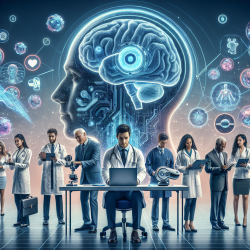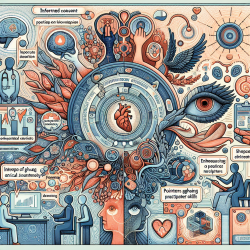Introduction
In the ever-evolving landscape of medical diagnostics, machine learning (ML) is emerging as a powerful tool, particularly in the diagnosis of complex conditions like Parkinson's Disease (PD). The research article "Machine Learning for the Diagnosis of Parkinson's Disease: A Review of Literature" provides a comprehensive overview of how ML is revolutionizing the diagnostic process for PD. This blog aims to guide practitioners on how to leverage these findings to enhance their diagnostic skills and encourage further research in this promising field.
Understanding Parkinson's Disease
Parkinson's Disease is a progressive neurodegenerative disorder characterized by both motor and non-motor symptoms. Traditionally, diagnosis relies heavily on clinical assessments of motor symptoms, which can be subjective and challenging due to the subtlety of early-stage symptoms. This often leads to delayed diagnosis and treatment.
The Role of Machine Learning
Machine learning offers a transformative approach by enabling the analysis of complex datasets, including neuroimaging, voice recordings, and movement patterns. The review highlights several ML models that have been applied to differentiate PD patients from healthy controls and other movement disorders, achieving high diagnostic accuracy.
Implementing Machine Learning in Practice
- Data Integration: Practitioners should consider integrating various data modalities such as MRI, voice, and movement data into their diagnostic processes. This holistic approach can improve diagnostic accuracy and early detection.
- Continuous Learning: Engage in ongoing education through webinars and conferences to stay updated on the latest ML techniques and their applications in PD diagnosis.
- Collaboration: Collaborate with data scientists and ML experts to develop and refine diagnostic models tailored to your clinical needs.
Encouraging Further Research
The review underscores the potential of ML to uncover novel biomarkers and enhance clinical decision-making. Practitioners are encouraged to participate in research initiatives and contribute to the growing body of knowledge in this field. By doing so, they can help bridge the gap between research and clinical application, ultimately improving patient outcomes.
Conclusion
Machine learning is not just a tool for researchers; it is a valuable asset for practitioners seeking to improve their diagnostic capabilities. By embracing ML, practitioners can offer more accurate and timely diagnoses, paving the way for better management of Parkinson's Disease.
To read the original research paper, please follow this link: Machine Learning for the Diagnosis of Parkinson's Disease: A Review of Literature.










